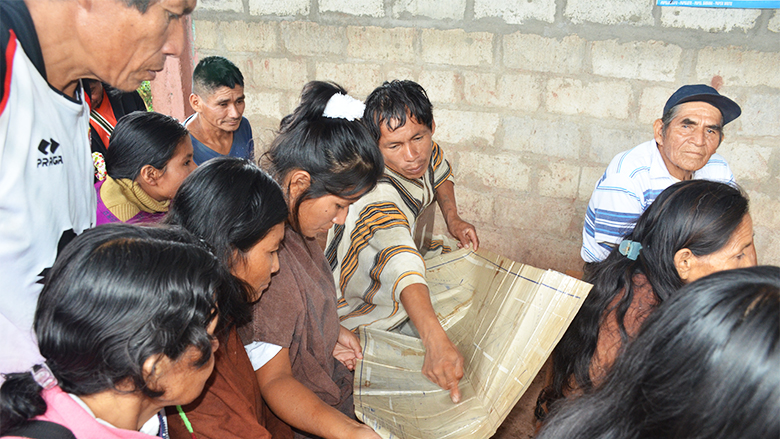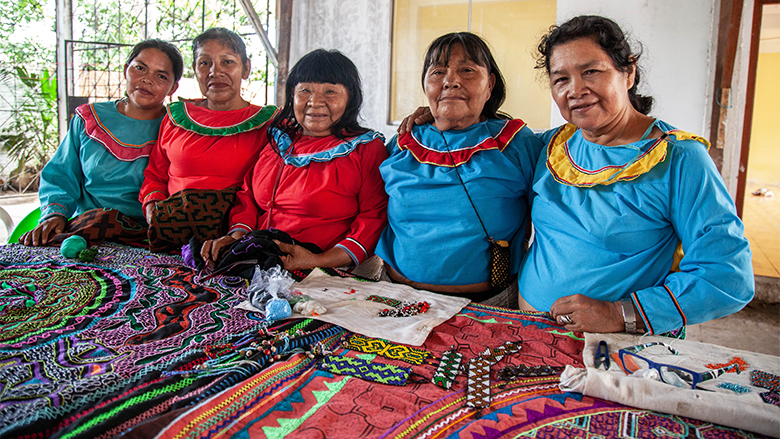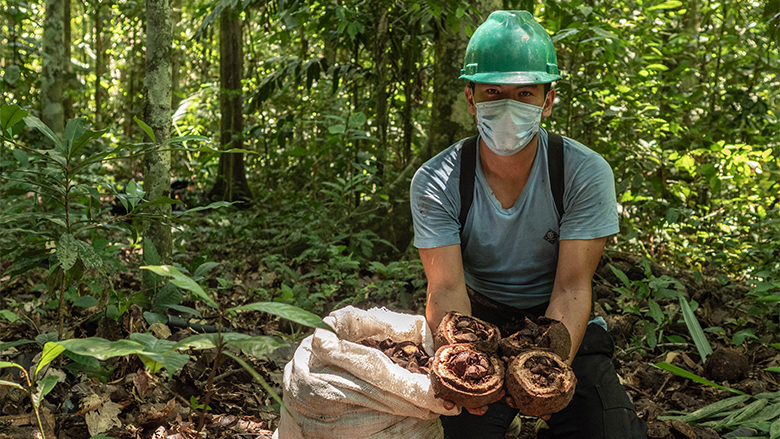Challenge
High deforestation rates, unsound forestry practices, and illegal logging have threatened Peru’s impressive biodiversity as well as the livelihoods of local communities. On average, over 134,000 hectares of forest cover were lost annually in Peru between 2005 and 2015, especially in the Amazon. Forty-five percent of this deforestation took place on lands with no legal status. Over half of national greenhouse gas (GHG) emissions come from land-use change (predominantly deforestation).
Forests provide a wealth of goods and services: carbon storage, biodiversity, water filtration, storm mitigation, timber and nontimber products, food, and more. Indigenous peoples and local communities (IPLCs) retain a close relationship with forests, not only for their livelihoods but also for their cultural and spiritual well-being. Although social indicators are low for most inhabitants of the Amazon region, Indigenous peoples fare worst from high levels of chronic malnutrition and infant mortality and from limited access to education and primary health care.
Approach
The Saweto Dedicated Grant Mechanism (DGM) for Indigenous Peoples and Local Communities Project aimed to invest in enabling conditions for environmental sustainability, climate change mitigation, and poverty reduction among IPLCs by promoting (i) legal protection and recognition of native communities; (ii) land tenure security; and (iii) financial support and capacity building for promoting income generation and food security in native communities through sustainable forest management.
By strengthening their land rights, IPLCs can better protect their lands and forests from illegal encroachment and develop productive activities related to forestry, tourism, aquaculture, or other income-generating enterprises. In response to COVID-19, the project also reallocated grant proceeds to support IPLCs in responding to the pandemic with communication materials on Covid-19 prevention and sanitary protocol development and training.
Results
Between 2015 and 2021, the project contributed to the following key results:
- Recognition of 253 native communities, allowing those communities to begin the land titling process.
- Demarcation and titling of 58 native communities, covering approximately 230,000 hectares.
- Financing for 44 community-based productive subprojects—including 16 women-led initiatives—contributing to sustainable forest management and improved food security and income generation in 119 native communities in the Peruvian Amazon. These subgrants also contributed to (i) formalizing cooperatives and associations, especially for women; (ii) acquiring permits and certificates for production; and (iii) increasing productivity and promoting sustainable practices in community businesses by investing in improved facilities and equipment, training, and market access.
- Provision of personal protection gear and sanitization and first aid kits for 400 communities; 164 communities in highly isolated areas also received radio communication equipment to help cope with mobility restrictions imposed by the COVID-19 pandemic.
- Adoption by the government of Peru of new regulations to streamline multiple aspects of the native community recognition and land titling processes. The new regulations emerged following close coordination between the National Steering Committee (NSC) and public agencies at the national and regional levels. Adopted at the national level, these regulations set standard procedures and clear assessment criteria for all regions, expediting the recognition and titling processes.

Native community Alto San Pascual discusses its recognition process, Satipo province, Junin
Photo: Water Aguirre / World Bank (2018)


